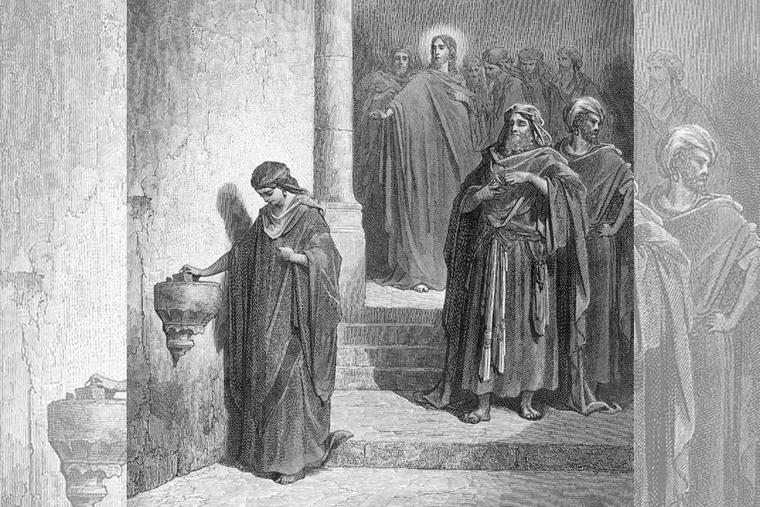New book explores how Catholics experience the Bible
Detail from “Still Life with Bible” (c.1885) by Vincent van Gogh. (Image: WikiArt.org) Fordham University theology professor Michael Peppard shares an interesting anecdote about when he and his publisher were trying to find the right title...



Fordham University theology professor Michael Peppard shares an interesting anecdote about when he and his publisher were trying to find the right title for his new book.
An editor suggested his book about Catholic biblical interpretation could be called How Catholics Read the Bible.
“And I somewhat cheekily said, ‘That would be a short book, because we don’t read it,’” Peppard told Catholic World Report. “But seriously, I then said ‘read’ would be misleading and [would] have a kind of Protestant framing of the topic … I eventually said, ‘I think a more honest and interesting book might be to show how the Bible infuses the whole Catholic tradition, even though the vast majority of Catholics are not reading it.’”
Thus How Catholics Encounter the Bible (Oxford University Press, 2024) came into being. It presents a compelling argument for how many Catholics experience the Bible not so much by private reading or in study groups, but more through the liturgy, Marian devotion, fine art, and even fiction.
Peppard, who recently presented a seminar on “the Spiritual Exercises of [Bruce] Springsteen” at the Catholic Imagination Conference in November 2024 at the University of Notre Dame, is a Bible scholar whose research examines the meaning of the New Testament and other Christian writing in their social, artistic, and ritual contexts.
Peppard’s book takes readers through the Catholic liturgical cycle and demonstrates how the lectionary and Sunday Mass readings are assembled with readings from both the Old and New Testaments. The author cites rudimentary studies showing that while few Catholics in the pews are intimately familiar with the Old and New Testaments, most claim they “already know the stories,” by participating in Mass and other devotional practices.
“Through all these rhythms, and especially at life’s peaks and valleys,” Peppard writes, “praying Catholics visualize the Bible with their fingers on beads, their ears on bells, their feet on pilgrim paths, their minds on Gospel stories, their hearts on Psalms, and–once in a while–their eyes on the printed page of the Book.”
Catholics are also encouraged to “encounter” the Bible through meditation and reflection on Scriptural readings, and by their exposure to religious art such as Michelangelo’s Pieta. Marian devotion, Passion plays, the Stations of the Cross, and other biblically inspired practices are other ways in which Catholics can experience the Bible without having to read and studied biblical passages in detail.
“Catholics have interpreted the Bible not only through visual arts, but through varieties of performing arts as well,” Peppard added. “One simply cannot appreciate Catholic biblical reception without pondering the scale and features of liturgical drama. The scripts for the plays enacted in cathedrals and other churches of Europe were drawn mostly from the Bible–with ample imagination between the lines, of course.”
One of the more intriguing aspects of Peppard’s new book is his argument equating certain works of art and music as forms of biblical encounter.
“Certain Catholic fiction writers, imbued with biblical stories as a native second language, have created poignant biblical encounters for their readers (whether Catholic or not)” Peppard writes. “The expansive cosmic drama of Dante remixed biblical characters in ways that influenced centuries of European theology and also, across the ocean, the prophetic parables of [novelist] Flannery O’Connor. O’Connor in turn shaped the songwriting of Bruce Springsteen and the films of Martin Scorsese.”
Peppard suggested that even popular superheroes on television have proven to be “unlikely vectors” for the Catholic biblical tradition, as the stories are re-interpreted and passed on through embodiment, performance, and re-imagination.
Elsewhere in his book, Peppard raises some concern about “bible curators” understating the role of women in the Church’s formative years, and downplaying the importance of the Old Testament in building a full understanding of Salvation history.
“As it is now,” Peppard writes, “the attentive listener at Sunday Mass will encounter the identity of God as incarnate in Jesus, but will struggle to meet the God made manifest in the stories of ancient Israel. For all these reasons, if the lectionary is functionally the Bible for Catholics, its current pairings do not reveal an adequate Catholic understanding of God.”
How Catholics Encounter the Bible is especially effective in examining the old saw about Catholics embracing the Bible without reading it in any detail. As Peppard notes early in his story, “Catholics are a people of the imagination. Catholic art, music, and literature brim forth with biblical narrative and imagery–but often not in ways that correspond strictly to the biblical text itself. For the vast majority of Catholics, the Bible is incorporated into their prayer, but they are not reading it as a book.”
The author is optimistic that the new book will stimulate discussion in classrooms, parish discussion groups, and perhaps even seminaries. However it is received, the book is likely to inspire fresh thinking on the Bible’s overall influence in the contemporary Catholic imagination.
“Catholics sometimes suffer from embarrassment about their lack of biblical literacy and absence of zeal for reading the Bible, even when they are otherwise deeply connected to their churches,” Peppard told CWR. “Perhaps this book can demonstrate how they [Catholics] are indeed people of the Bible, that it’s not just ‘a Protestant book’–even if Catholics are not a ‘people of the Book’ in the ways their neighbors expect.”
And in a somewhat ironical denouement, the author has some fun describing how the Catholic experience of the Bible is not dependent entirely on the text itself. “The Catholic Bible exists primarily in so far as it is proclaimed, prayed, embodied, and re-imagined. In the end, the reader will see how the Bible thrives among Catholics as a proclaimed and incarnate Word, even if its printed text seems often to be missing.”
If you value the news and views Catholic World Report provides, please consider donating to support our efforts. Your contribution will help us continue to make CWR available to all readers worldwide for free, without a subscription. Thank you for your generosity!
Click here for more information on donating to CWR. Click here to sign up for our newsletter.















